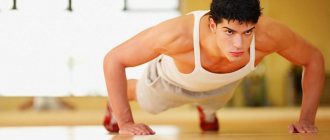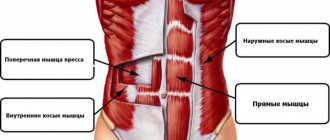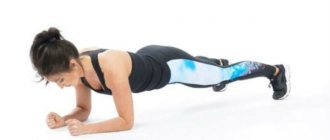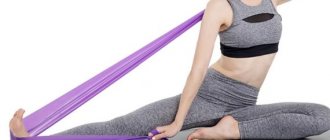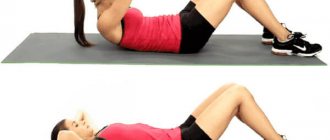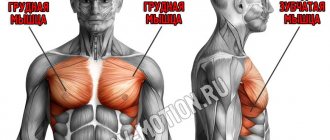Isometric exercises are the so-called “static” training. Its essence is to counteract the resistance of a particular object for a certain period of time. This method is also effective for increasing strength and endurance. Isometric exercises are great for strengthening muscles. A good example is the plank exercise. Static training of this type is often included in strength training and yoga programs, as well as in military training. The peculiarity of isometric exercises is that you simply tense the muscles without changing their length, while the joints do not move.
“Some people with thin legs are stronger than people with thick legs. Why? Because the power lies in the tendons, in those invisible hard tissues that are second in density only to bones. Without tendons, a person would turn into jelly. But the tendons need to be trained. From my experience, one can be convinced that a large man does not necessarily have to be strong, but a man of modest build does not have to be weak.”
- these are the words of one of the founders of isometric exercises, Alexander Zass (“Amazing Samson”, “Iron Samson”). Since childhood, this man was not distinguished by outstanding physical characteristics, but he believed that the strength of athletes lies not in muscles, but in tendons. Based on this belief, he developed a program to strengthen them and achieved unprecedented results. With a weight of 63 kilograms, he broke chains that could withstand a load of 800 kg, and easily lifted the horse. Currently, scientists associate this phenomenon with biochemical processes in the body in conjunction with fortitude.
Isometric exercises[edit | edit code]
The essence of isometric exercises
lies in the fact that within 6-12 seconds maximum effort is expended to counteract the resistance of a particular object. This is what distinguishes isometric exercises, in which muscle contraction only causes tension, from isotonic exercises, during which muscle contraction causes its length to change. One of the most popular isometric abdominal exercises is the plank.
Benefits[edit | edit code]
Firstly, this is a huge time saving. These exercises only take a few minutes to engage your muscles.
Secondly, in such a short time the muscles do not have time to get tired to the same extent as during a regular workout (lasting 1-2 hours), after which 24-36 hours are needed for the muscles to fully rest, and without sufficient rest, as has already been said many times, Neither muscle strength nor their mass increases.
Since the time required for rest decreases when performing isometric exercises, you can train much more often.
And finally, one of the biggest advantages of isometric exercises is that with their help it is very convenient to develop and strengthen exactly those muscles that especially need it at the moment.
When performing traditional isotonic-dynamic exercises, maximum muscle tension lasts only a few seconds, that is, in the sum of all exercises done (over 1-2 hours), no more than 2-6 minutes per workout. Isometric exercises can perform the same task in just a few minutes a day. Moreover, the increase in muscle strength in this case is not inferior to the increase in strength during isotonic exercises.
When performing isometric exercises, the blood vessels that supply oxygen to the muscles contract. The cells are forced to work more intensely and do not expend as much energy as during isotonic muscle movement (in which most of the energy is spent on the movement itself). Thus, all muscle energy when performing isometric exercises is spent only on tension, and not on movement. Therefore, muscle development occurs in a much shorter time.
Historical reference
In different sources you can find different information about the ancient origins of statistical training. Some authors claim that they appeared in India, others in Ancient China, others in medieval Europe, and so on. It is impossible to understand where the truth is, because individual elements of isometric training were used along with dynamic exercises thousands of years ago. Therefore, discussions about the origin of static gymnastics are doomed to failure, as well as discussions about the origin of a bow or sword.
The only thing that is known for certain is that isometric gymnastics as an integral set of exercises appeared at the beginning of the twentieth century thanks to the work of Alexander Ivanovich Zass, a Russian strongman of Polish origin, who doubted the advisability of increasing muscle volume without thoroughly training the tendons. The fact that Zass has been recognized more than once as the strongest man in the world confirms the objectivity of this judgment.
Types of isometric exercises and methods of performing them[edit | edit code]
Based on the nature of execution, isometric exercises are divided into three groups:
- isometric-static exercises in their pure form, when maximum muscle tension counteracts resistance that cannot be overcome;
- exercises with weights, during which they stop for a few seconds (thereby creating isometric tension);
- exercises with the maximum possible weight, the initial phase of which has a clearly expressed isotonic-dynamic character, but the main phase is isometric-static, since already at a distance of 12-15 cm from the initial position of the bar an obstacle is installed that stops the movement.
With the help of such exercises, you can force the muscles to experience maximum tension in the most effective and necessary phase of movement at the moment.
Thanks to isometric exercises, you can most effectively increase the strength of muscles that are lagging behind in development, or muscle groups that are of paramount importance for an athlete for one reason or another.
To perform isometric exercises, a special simulator design was created, which is not difficult to make yourself. This is an iron frame (110-120 cm wide and 200-230 cm high), on both sides of which a metal pipe can be fixed.
But isometric exercises can be performed without special devices, using for them any solid object fixed in space, providing the muscles with such resistance that they, even being under maximum tension, are not able to overcome.
Basic isometric exercises
:
- bench press;
- craving;
- squat.
Success can be achieved by doing all these 3 exercises: one press exercise, one deadlift exercise, one squat exercise.
To this three you can add 2 other exercises:
- raising on toes;
- shoulder lifting.
More experienced and resilient bodybuilders can practice the “three deuces” system (when each of these exercises is performed 2 times), or the “three threes” system (when the exercises are performed 3 times) to achieve the best results.
There are several options for the position of the barbell when pressing:
- low position (at chin level);
- middle position (at eye level);
- top position (3-5 cm below the bar pressed to capacity).
When traction there are also three positions:
- low position (at knee level);
- middle position (at hip level);
- upper position (at waist level).
There are also three positions when squatting:
- low position (squat);
- middle position (half squat);
- upper position (squat with slightly bent legs).
If one exercise from each group is performed, the middle position is most often chosen as the most effective.
A series of isometric exercises of 5 exercises, each of which takes 12 seconds to complete (plus a minute break after each exercise), lasts a total of 6 minutes. This series can be repeated 2-3 times, maximum 6 times (changing the position periodically).
Depending on the duration, voltages can be:
- short (6 seconds);
- medium (9 seconds);
- long (12 seconds).
The intervals between exercises usually do not exceed 45-60 seconds, which is usually enough to restore normal breathing. The entire static isometric workout should not take more than 15-20 minutes.
When performing isometric exercises for the first time, care must be taken: initially, the tension should be limited to 6 seconds, given that it should not be maximum. After some time, you can move on to 9-12 seconds of maximum tension with breath holding.
Isometric exercises can be performed daily, as you don’t feel particularly tired after them. But at the same time, you should not abuse too much volume in an effort to achieve noticeable results as quickly as possible.
Despite all its advantages, isometric exercises cannot completely replace dynamic exercises, which allow developing certain abilities that cannot be achieved with isometric exercises alone.
Objectively approaching the assessment of isometric exercises, it is necessary to note a number of their weaknesses compared to dynamic ones: they do not supply the muscles with blood as intensively, contribute to muscle shortening, and do not develop coordination of movements and motor abilities of the muscles.
Static exercises, while increasing muscle strength, at the same time lead to the muscles losing the ability to move quickly. Dynamic exercises, due to the optimal ability to conduct excitation (innervation), are very effective in this regard.
With the simultaneous development of static and dynamic strength in an athlete, innervation does not deteriorate: muscle strength acquired through static exercises also manifests itself in speed strength. Moreover, the results of dynamic training are significantly improved.
Today, the optimal method for developing muscle strength is considered to be one that combines static exercises that develop strength with dynamic and relaxation exercises.
Bob Hoffman, in his book One Minute Every Day for Physical Endurance, Strength, and Health, suggests performing 12 isometric exercises without implements for 1-2 minutes.
The author offers a set of exercises that do not require any special equipment; as a counteracting object, he recommends using a wooden or metal door frame (door frame) or an ordinary wall, which is available in any room.
Here are the 12 exercises.
- In a standing position (without tilting your head back or bending your knees), press on the upper frame with the palms of your hands, which are slightly bent at the elbows.
- Crouching, apply pressure to the upper frame.
- Rise on your toes as high as possible and stay in this position for 6 seconds. Even though this exercise is only partially isometric, it is very effective.
- This exercise develops the neck muscles. To perform it, stand with your back to the wall, feet shoulder-width apart, hands on your belt. Press the back of your head against the wall, placing something soft under your head.
- This exercise is similar to the previous one, but you need to press on the wall not with the back of your head, but with your forehead.
- To develop arm muscles, perform the following exercise. Place your palms together and press with one hand on the other.
- This exercise is similar to exercise 6, but you need to connect your hands only with your fingers.
- Press with both hands on the vertical parts of the door frame.
- Press on the horizontal part of the door frame alternately with one hand and then with the other, slightly bent at the elbow.
- Press with both hands, elbows straight, on the vertical parts of the door frame.
- Pull the object attached to the door frame down.
- In a sitting position (bending your knees at different angles), apply pressure to the vertical parts of the frame with your feet.
The duration of each exercise should not be more than 4-6 seconds.
It is useful to combine this complex with a variety of movements that develop speed and flexibility (sports games, running and swimming). Many bodybuilders use them as supplements to their main workouts.
Often the new is the well-forgotten old. Many effective methods of physical improvement that were used earlier are today perceived as a new word in the development of sports. And this is not surprising. These techniques and equipment have stood the test of time. Moreover, the kettlebell occupies one of the first places in this series in terms of versatility of use.
Training principles of Alexander Zass
Having a short height (167 cm) and low body weight (about 75 kg), Alexander Zass surpassed in his physical capabilities more muscular strongmen weighing over 100 kg.
Often the spectators at the circus did not believe in the reality of what was happening.
One of his most famous acts is walking around the circus arena with a horse on his back.
For reference: the average weight of a horse is 400-500 kg!
In narrow circles of strength training specialists, Alexander Zass was known for his original point of view on the development of strength. It was radically different from what was generally accepted at that time.
Some experts believe that it was thanks to Zass that static (isometric) strength exercises gained worldwide recognition.
Alexander Zass believed that human strength does not lie in large muscle volumes, but in the strength of tendons.
The entire training process for developing strength was designed to promote the development, first of all, of tendon strength.
I would like to immediately note that all experts draw information about Alexander Zass’s training methods from his autobiographical book “Alexander Zass. Biography, system and methods”, which was published in 1925.
The book is almost 100 years old. And some training principles are already outdated. But most of the methodology has not lost its relevance today.
Basic training principles of the Alexander Zass method:
- The importance of tendon strength in muscle contraction
- Increased tendon strength occurs through isometric (static) exercises
- Tendon growth occurs an order of magnitude slower than muscle tissue growth
- For tendons to grow, continuous training tension is necessary. An order of magnitude higher than the muscles can withstand.
A number of its principles now seem quite controversial.
We are simply talking about the methodology, from which you can highlight only individual points for yourself.
Isometric exercises, Samson system[edit | edit code]
Samson's isometric exercises for forearms
Samson's speech
Isometric (static)
are those exercises in which the length of the working muscle does not change. Accordingly, there is no movement in the joint. Isometric exercises have been known for a long time, but we owe the creation of a system based on them to Alexander Ivanovich Zass, also known as Iron Samson, who, with the help of his system, achieved incredible strength, despite the fact that the athlete’s own weight did not exceed 80 kg. He believed that the basis of strength was the strength of the tendons, not the volume of the muscles. Isometric exercises are good because the workout takes no more than 15-20 minutes and does not require a lot of equipment.
In modern strength sports, isometric exercises are used to increase strength, to overcome dead spots, and to overcome stagnation in training. Below are Samson's basic exercises with a description of the muscles involved.
exercise 1
Chain in bent arms at chest level. Using muscle effort, try to stretch the chain. The exercise targets the latissimus dorsi, rear deltoids and triceps.
exercise 2
The chain is behind the head, at the level of the back of the head. Using your triceps, try to stretch the chain.
exercise 3
Chain on outstretched arms above the head. Try to stretch the chain. The exercise is aimed at increasing the strength of the latissimus dorsi muscles.
exercise 4
Chain behind my back. Try to stretch the chain by moving your arms forward. This exercise develops strength in the chest, triceps and deltoids.
Isometric training from Tamir Sheikh
exercise 5
As you exhale, wrap the chain around yourself. After inhaling, try to stretch the chain by tensing the pectoral and latissimus muscles.
exercise 6
Holding one end of the chain below with your left arm extended, try to stretch it with your bent right arm. Then we change hands. The exercise develops the strength of the biceps and triceps of the arms.
exercise 7
Standing with both feet in the middle of the chain and holding its ends with your hands, try to stretch the chain using the force of your trapezius.
exercise 8
Starting position, as in exercise 7, elbows pressed to the body, using the force of the biceps we try to stretch the chain.
other exercises
Having understood the basis of this method, you can come up with dozens of similar exercises yourself, aimed at developing the strength of any muscles of the human body.
General rules for performing isometric exercises[edit | edit code]
Exercises are performed while inhaling. The effort during the exercise is gradually increased to maximum. The exercise time is no more than 5-6 seconds for beginners to practice this method and no more than 10-12 seconds for experienced users, while the maximum effort lasts no more than 2-3 seconds. The total time of isometric training using this method is no more than 15 minutes. The number of approaches for each exercise is 2-3 approaches. When performing isometric exercises, blood pressure can greatly increase, so if you experience headaches, you should stop training immediately.
Isometric training according to the Samson method can be carried out not only with a chain, but also with a metal rod or wooden stick, a towel or a piece of thick rope, etc. Imagination has no limits. To avoid injury, you need to warm up thoroughly before training - injured tendons take much longer to heal than injured muscles, so you need to be especially careful when performing isometric exercises
Short biography. The birth of the power of Iron Samson
Little Sasha was born on February 23, 1888, in the family of a simple peasant. He was the third child in a family of seven people: father Ivan Petrovich, mother Ekaterina Emelyanovna and two more brothers and two sisters Alexander. They lived in the Vilna province of the Russian Empire, on a small farm without a name.
Childhood, youth and circus
Soon after Sasha's birth, the whole family moved to Tula, and then to Saransk, since Ivan Petrovich received the position of clerk. The landowners' estates, which were managed by his father, were located between Saransk and Penza.
The management of bank accounts and household management was completely taken over by the purposeful and strong-willed Ekaterina Emelyanovna. The entire life of the Zassovs was arranged in such a way that each family member worked constantly, as hard as he could. From memories it is known that the family did not need, there was plenty of food and drink, but all this was obtained through hard, incessant work.
Alexander’s childhood was not full of interesting events, but his father had high hopes for his son: he trusted him with the transportation of large sums of money to be credited to a bank account and saw Sasha as a locomotive driver in the future. His father was ready to provide him with a good technical education, but the boy himself was not drawn to this profession.
The soul of the future athlete strived for bright, enchanting circus performances.
One day, after a successful transaction for selling horses at a fair, Ivan Petrovich went with his son to a performance of a traveling circus. The spectacle deeply shocked Sasha with its festive splendor. I especially liked the strongman who bent an iron rod around his neck and easily juggled heavy weights.
The incredible sharpness and intensity of the emotions received at the performance did not allow Sasha to fall asleep that evening. And then he committed a terrible crime - he ran away from the room at the inn where he and his dad spent the night and, at his own expense, watched the artists perform again.
After such disobedience, the father severely punished his son and then sent him to work as a shepherd in a remote village. The boy was 12 years old when he learned to manage large herds of horses, cows and camels, and also gained undeniable authority among six ferocious and capricious wolfhounds, who obeyed him well in his work.
Thoughts about the circus did not leave Alexander all this time. He learned to shoot well, protecting the herds from predators. mastered the basics of training, teaching horses circus tricks. All this was useful to him later.
Returning to Saransk, Sasha began studying the biographies of famous gymnasts, athletes and circus performers. His idol was Evgeniy Sandov, the most famous strongman of the 19th century.
The boy enthusiastically collects literature on the development of physical capabilities and body strength, studies the works of famous athletes, masters exercises using available materials: wood, stones, and carries a calf on his shoulders.
And although Sashenka was a weak, sickly child as a child, regular exercise brings significant benefits to the health and endurance of the body. he feels his muscles strengthen and his body’s strength capabilities expand.
When Alexander turned 20, his father sent him to Orenburg to study as an assistant driver. At the same time, the famous Andrzhievsky circus comes to the city on tour and, of course, the young man goes to the performance.
The boundless love for the circus, the skills acquired through regular training and the desire to realize his lifelong dream add courage to Alexander. And he turns to the director of the circus with a request to hire him. To his surprise, he receives approval with the explanation that for now he will only be hired as a laborer and his life will be very difficult. But the future artist, hardened by difficulties, is not afraid of obstacles on the way to his dream and goes to work in the circus.
At the new place, Sasha does the hardest “menial” work. He meets and begins to help the athlete Kuratkin prepare for power routines. With his determination and perseverance, Zass earned the sympathy of the strongman and he teaches the young man the wisdom of circus performances.
Thanks to self-training and competent mentoring, the young man begins to perform in the arena within a few months.
In the future, Alexander Zass will perform in the Yupatov and Khoitsev circus, constantly improving his athletic abilities.
War, captivity and escapes
The outbreak of the First World War suspended the development of the career of the great strongman. And, after mobilization, Alexander Ivanovich Zass was enlisted in an infantry regiment, and then in reconnaissance, where he made mounted raids behind enemy lines.
He turned out to be a skilled and fearless warrior, his developed fighting qualities and skills ensured a quick promotion, and his brave deeds were legendary.
Thus, the story of how Alexander brought a wounded horse back to his regiment was very popular.
But we didn’t have to fight for long. In the battle, the athlete was seriously wounded and captured. Doctors wanted to amputate both of his legs, but the indecisiveness of the doctors and regular passive exercises from the personal system made such an operation completely unnecessary.
The prisoner, thanks to incessant training, left to his own devices, learned to walk again. After some time, he not only walked on crutches, but also helped care for other patients.
Four escapes from captivity speak of the great perseverance and fortitude of the Russian hero. Each time, overcoming any obstacles, Alexander found himself free and tried to get to his people. Three times he was caught, and, after severe punishment, he was returned to hard work or imprisonment. And only on the fourth time, we managed to break free completely.
Life in Europe and circus acts
Having suffered in the war and in captivity, Alexander Ivanovich decided that there was no place for a soldier of the tsarist army in Soviet Russia and remained in Europe. In the early 20s of the last century, the athlete took the pseudonym Samson, under which he performed in the Schmidt Circus. With his unique abilities he won worldwide fame and enormous popularity among the European public.
He performed briefly in Paris, then at 24 he received an invitation from Oswald Stoll, the head of British variety shows. Having moved to England, he settled there until the end of his life.
Throughout his life, Alexander Ivanovich Zass studied and analyzed the physical capabilities of the human body. He tested his knowledge in practice, proving by personal example the effectiveness of the exercise systems he used, and now we can apply his wealth of experience in improving our body.
Isometric training in public transport[edit | edit code]
You can do a workout even in a crowded vehicle and not look like an idiot in the eyes of others. You could say that people around you won’t even notice anything. This method was repeatedly successfully used by the author of this article during frequent trips to the subway. Here are some exercises that apply to this case. The starting position for all exercises is standing, holding the top rail with both hands.
exercise 1
Grab the handrail from above. Push the top handrail up with both hands. Triceps, deltoids, and chest work here.
exercise 2
Overhand grip. Pull the handrail down. The latissimus dorsi and biceps muscles work.
exercise 3
Overhand grip. We try to stretch the handrail to the sides. Triceps and lats work.
exercise 4
Overhand grip, shoulder width apart. We pull the handrail together with our hands towards each other. The chest, biceps, and deltoids work.
exercise 5
Underhand grip. Pull the handrail down. Similar to exercise No. 2, but here the load on the biceps is greater, and the serratus back muscles also work.
other exercises
Based on the above exercises, you can come up with many more when traveling on public transport. Just don’t forget the rules of isometric training outlined above. The author even successfully practiced isometric supersets while on the subway. For example, first you push the handrail up for a few seconds, and then immediately pull it down. With frequent use of this technique and a corresponding increase in strength, be careful not to break the handrail in the subway or trolleybus, otherwise you will have to compensate for material damage.
Application area
Zass isometric exercises are recommended in the following cases:
- The athlete has an initial level of training. In static conditions, it is impossible to obtain a load that the body cannot withstand. Accordingly, when performing the exercises of Zass (“Iron Samson”), a person does not expose his tendons to danger.
- In normal training, the athlete has reached a dead end. For many, one day a dead point occurs when, with the same efforts, no development occurs. The philosophy of isometric exercises will allow you to look at training in a new way and quickly get out of a dead end.
- When you need to increase your strength. In this case, the static load should alternate with dynamic.
Isometric training at a lecture[edit | edit code]
Well, what else can a student do during a boring lecture, if not train his muscles unnoticed by others and, especially, by the teacher? The author, once a student, came up with several simple isometric exercises that allow you to usefully spend time on unloved lectures, such as Marxism-Leninism.
exercise 1
Grab the seat you are sitting on with both hands and, straining your trapezius and biceps, try to lift it up.
exercise 2
Hold the seat with both hands and try to push it down. If the body rises above the seat, then you can put your legs under the seat. Triceps, chest, deltoids work.
exercise 3
We put our hands under the desk and try to lift it. Designed mainly for biceps.
exercise 4
During lectures it is convenient to do several other types of exercises - isometric and dynamic self-resistance exercises, static muscle tension (Anokhin's volitional gymnastics) and some others. In this article, I will give an example of some isometric self-resistance exercises that are invisible to others. Hands are on the sides of the knees. With the force of our hands we try to bring our knees together, but with the force of our legs we do not allow this to happen. The muscles of the chest, arms, and abductor muscles of the legs work. When performing the exercise, do not forget to pretend that you are listening carefully to the teacher.
exercise 5
Hands are on your knees. We try to spread our knees to the sides, but with the force of our legs we do not allow this to happen. The adductor muscles of the legs, latissimus, trapezius, triceps, and posterior deltoids work.
exercise 6
With the palm of the half-bent left hand, we press down on the palm of the half-bent right hand. At the same time, the right hand presses upward, as a result, no movement occurs and we still smile sweetly at the teacher. Then the hands change roles. Works the biceps and triceps of both arms.
exercise 7
We bring our hands together with our palms facing each other at the level of our stomachs, so that it is not noticeable from the outside, and press them against each other. The muscles of the chest and arms work.
exercise 8
We clasp our palms together with our fingers and try to spread our arms to the sides. In this case, the trapezius, deltoids, triceps, and forearms work statically.
other exercises
I suggest you work with your own imagination, there is quite enough work for it.
Advantages
The Zass isometric exercise system has many advantages:
- The lesson lasts only 15 minutes.
- There is no need for special equipment or premises.
- Zass isometric exercises can increase tendon strength, which is the key to true human strength.
- For certain types of activities, you can choose the most suitable exercises.
- Anyone can practice this method: both a person recovering from an injury and a professional athlete preparing for a competition.
- For any part of the body there are separate exercises by Zass (“Iron Samson”).
- The body's energy is spent only on tension in the joints, without being wasted on movements that cause muscle fatigue.
- Increased flexibility.
- Low probability of injury.
Second extreme
To counter the misconception that bulky muscles guarantee strength, there is another: “Isometrics are all you need to develop strength.” Of course, Zass isometric exercises alone cannot provide significant strength gains. Don't forget about the muscles that help move objects; bones that can support significant weight and pressure; the cardiovascular system, which supplies muscle tissue with oxygen; and finally, about the mind, which allows you to cope with all this without causing harm to your health.
According to the creator of isometric exercises, Alexander Zass, work on developing strength should have the following structure:
- Strength of will.
- Ability to control muscles.
- Tendon strength.
- Correct breathing.
When preparing any athlete, special attention should be paid to strength training, and true strength, as we have already figured out, does not exist without the strength of the tendons.
